The Essentials of Watch Lug Width
When discussing watches, there’s a little detail that many overlook but plays a huge role in both style and comfort – the watch lug width. It might sound like a technical term, but trust me, getting it right makes a world of difference. I’ve personally spent years refining my watch collection, and if there’s one thing I can tell you, it’s that paying attention to the lug width can elevate your wrist game.
The strap width measurement is essentially the distance between the lugs of your watch, where the strap connects to the case. It determines the size of the strap you can attach and, in turn, affects the overall look of the timepiece. Ever tried on a watch and felt something was just ‘off’? Odds are, the lug width didn’t match the size of the strap – and that creates a visual imbalance.
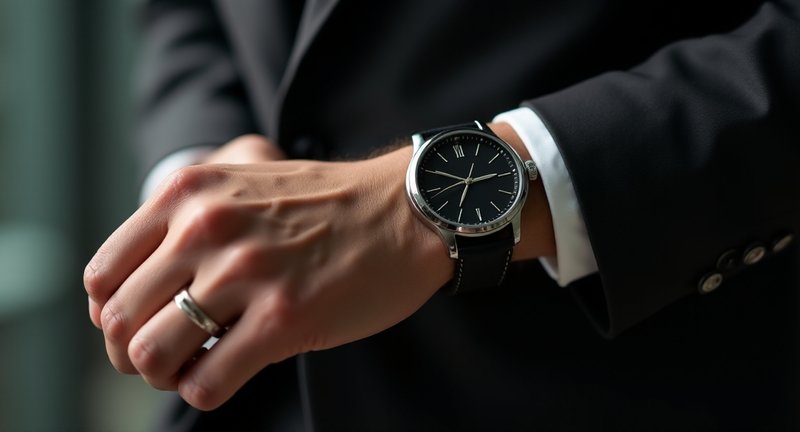
What’s great about being aware of the lug distance is that you can play around with different straps to change up your style. A too-narrow strap can make a robust watch look awkward, while a too-wide one may swallow up a delicate timepiece. It’s all about finding that sweet spot, and once you do, your watch feels perfectly balanced.
Whether you’re going for a sleek leather strap or a rugged NATO band, understanding the watch strap connection width ensures you’re choosing straps that complement, not clash, with your watch. It’s a small detail that carries big style points. So, next time you’re watch shopping, don’t just focus on the face – spare a thought for those lugs.
The Importance of Watch Lug Width
Lately, I’ve noticed something fascinating about the way a timepiece sits on your wrist. It’s one of those things that, at first glance, might seem trivial. But when you dig deeper, it reveals itself to be a subtle yet significant detail. The connection between the strap and the case can make or break the overall look of a watch.
Imagine slipping on a sleek watch, only for the strap to feel off-balance or awkwardly spaced. That’s where the space between the lugs really starts to matter. It’s like finding the perfect pair of shoes they need to fit just right, or they throw off your entire outfit.
In my own experience, I’ve found that different watches call for different straps. A wider strap can ground the piece, giving it a bold presence, while a narrower one might offer elegance and refinement. It’s a small choice with a surprisingly big impact.
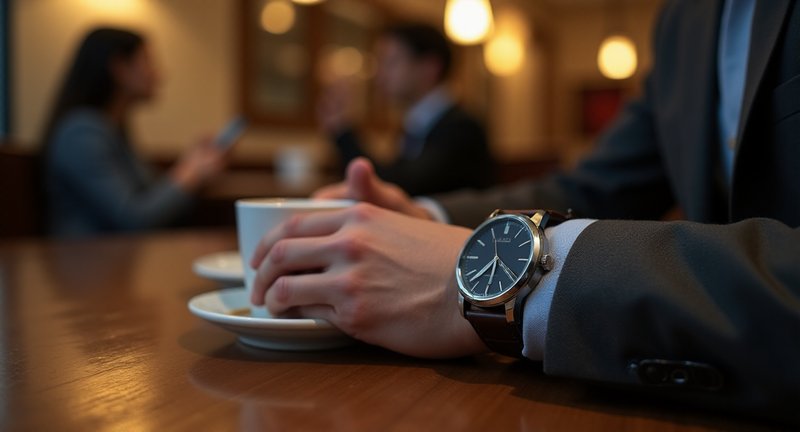
Have you ever noticed how a strap that’s too narrow can leave the watch looking almost delicate? Conversely, one that’s too wide can overwhelm your wrist. I’ve played around with these combinations myself, and trust me, the sweet spot is worth seeking out.
This is something many people overlook, but once you start paying attention to how your watch connects to its strap, it opens up a whole new world of style possibilities. The way those details line up can tell a lot about your sense of style and your eye for detail.
Understanding Watch Components
Understanding the components of a watch is like getting to know the soul of your timepiece. Every part, no matter how small, plays a critical role in its function and aesthetic. Let’s dive into a few key elements that I’ve come to appreciate over the years.
First, the watch case. It’s more than just the outer shell; it’s the protector, housing the movement and safeguarding the inner workings. Cases come in all shapes and sizes, from minimalist slim profiles to bold, oversized designs. The choice of material here stainless steel, titanium, or ceramic can really affect not only the look but the wearability of your watch.
Next is the crown, that tiny knob on the side. It might look like a small detail, but it’s the command center. Whether you’re setting the time, winding the movement, or even adjusting additional features like a date window, the crown is essential. Some crowns are screw-down types, adding an extra layer of protection from water handy if you’re as clumsy around water as I am!
Then we have the crystal. This is the clear window on the watch face. Most high-quality watches use sapphire crystal because it’s nearly scratch-proof, which is key for everyday wear. But some prefer acrylic for its vintage appeal, even if it’s more prone to scratches.
As a matter of fact, let’s talk about the bracelet or strap. Whether you’re opting for leather, metal, or even rubber, this part really personalizes your watch. It’s all about comfort and style. But what holds that strap in place? The tiny pins or bars connecting the strap to the case those unsung heroes deserve some recognition, too.
Importance of Choosing the Right Strap
Straps aren’t just about keeping your watch secure. They’re an extension of your style, and, frankly, they can make or break the entire look. Imagine pairing a sleek, modern timepiece with a bulky, ill-fitting strap it’s like wearing mismatched shoes to a formal event.
Choosing the right strap is about balance and proportion. A too-thin strap can make a bold watch face look out of place, while a wide strap might overpower a delicate design. It’s about finding that perfect fit where the watch and strap complement each other seamlessly.
Material also plays a huge role. Leather, metal, fabric they all send different messages. When I opt for leather, it’s because I want something timeless, something that feels luxurious but grounded. Meanwhile, a metal bracelet? That’s for when I want to feel invincible.
Then there’s the clasp. Don’t overlook this detail! A well-designed clasp not only adds to the overall aesthetic, but also provides comfort. I’ve learned the hard way that even the most beautiful strap can turn into a nuisance if the clasp isn’t up to par.
And don’t forget about comfort. A great-looking strap won’t do much good if it irritates your skin or slips around on your wrist. Pay attention to the fit it should feel like an extension of you, not something you’re constantly aware of.
How to Measure the Distance Between Lugs
Let’s dive into one of those small but essential details that can make or break the look and feel of a watch the distance between lugs. You may not think of it right away, but getting this right is key to choosing the perfect strap that fits both visually and physically.
So, how do you measure it? Well, it’s simpler than it sounds, and you don’t need any special tools to get it done.
-
Start with a ruler – Grab a small ruler or calipers (if you have them lying around) to measure the gap between the lugs, the points where the watch band attaches to the case. I prefer a metal ruler for precision, but anything with clear millimeters will do.
-
Measure in millimeters – Place the ruler across the inner edges of the lugs. The distance from one inner edge to the other is what you’re after. Be sure to align the ruler properly to get an accurate measurement.
-
Double-check for accuracy – Don’t rush. A quick double-check will ensure that your new strap fits like a glove, avoiding any wobbling or strain.
This small step has a huge impact. It affects the watch’s balance on your wrist and the overall aesthetic. Too narrow, and your strap might feel flimsy; too wide, and it may not even fit at all. The key is getting it just right, and once you know how, it’s a game-changer for any future watch or strap purchases. Trust me, your wrist will thank you.
Tools Needed for Accurate Measurement
Concerning tailoring or adjusting garments, nailing accurate measurements is non-negotiable. It’s like preparing the perfect recipe without the right tools, things can quickly go awry. Over the years, I’ve learned that investing in the right measuring tools saves time and reduces frustration. Here’s a rundown of what I always keep at hand:
-
Measuring Tape: A flexible measuring tape is an absolute must. It wraps around curves and contours with ease, making it perfect for measuring everything from waistlines to sleeve lengths. Make sure it’s durable and marked in both inches and centimeters some fabrics have a mind of their own when stretching.
-
Tailor’s Chalk: Ever tried to mark measurements on fabric with a pen? Big mistake! Tailor’s chalk is your friend here. It leaves clear, erasable lines without causing damage to the material. You’ll thank yourself later when those marks vanish with a quick brush-off or wash.
-
Straight Edge Ruler: For those sharp, precise lines, a straight edge ruler does wonders. I use it to ensure that hems or waistbands are perfectly aligned. It’s also great when you’re marking out alterations that need to be consistent and symmetrical.
-
Seam Gauge: If you’ve never used a seam gauge, you’re missing out. This nifty little tool helps me double-check smaller measurements, like seam allowances or button placements. I find it especially useful when working on detailed adjustments.
-
Digital Caliper: Sounds fancy, right? This tool takes accuracy up a notch, especially when you’re measuring smaller elements like buckle or strap widths. I like the feeling of knowing my measurements are precise down to the millimeter.
Each of these tools plays its part in ensuring garments fit perfectly. Skip one, and you may find yourself struggling to achieve that polished look. It’s all about precision and trust me, your wardrobe will thank you.
Common Mistakes in Measuring Lug Width
Considering measuring the width between lugs, trust me, it’s one of those details that can quietly make or break the fit of your strap. Too often, people don’t even realize they’ve made a mistake until it’s too late and their strap doesn’t sit right. I’ve been there wondering why things just don’t look or feel right.
The first mistake I’ve noticed? Measuring from the outer edges of the lugs instead of the inner ones. It might sound like a small slip-up, but it adds unnecessary millimeters, and suddenly that sleek fit you imagined? Gone. It’s a rookie mistake that catches even the seasoned fashion aficionados off guard.
Another misstep I see often is relying solely on a ruler or guessing the gap. Lug dimensions aren’t something you want to eyeball. Precision matters here, and using a proper caliper or a dedicated measuring tool is your best friend. Trust me, once you’ve got one, you’ll wonder how you ever lived without it.
Also, and this one’s personal, don’t forget to double-check your measurements. I’ve learned the hard way that a rushed job leads to ordering the wrong size strap twice. It’s a small, but incredibly important step that can save you frustration (and a few dollars).
Understanding Different Lug Designs
Regarding watches, I’ve always been fascinated by the details, and one of those often-overlooked details is the lug design. The lugs – those little arms extending from the watch case – might seem minor, but they can drastically alter both the look and fit of your timepiece. Trust me, I’ve learned this the hard way.
Let’s talk about lug width for a second. You know, ‘Watch Lug Width’ is not just a technical term, it’s the secret to making sure your new watch doesn’t end up feeling uncomfortable or looking out of place on your wrist.
There are actually several types of lug designs you might encounter:
- Straight Lugs: The most common, where the lugs extend straight out from the case. These are versatile but can feel a bit too “standard” for some.
- Curved Lugs: Now we’re talking elegance. These gently wrap around your wrist, offering a more tailored fit and a smooth transition from case to strap.
- Hooded Lugs: An unusual and eye-catching design, where the lugs are partially covered by the case. It gives the watch a sleek, uninterrupted line.
- Integrated Lugs: These lugs blend seamlessly into the case and strap, creating a futuristic, almost sculptural appearance.
Now, here’s a tip I swear by: always consider the ‘Lug size of the watch’ before choosing a new strap or even a whole new watch. A misfit here can ruin the whole aesthetic, or worse, leave your watch awkwardly dangling on your wrist like a broken promise.
Types of Watch Straps and Their Compatibility
Regarding choosing the right watch strap, it’s like picking out a new pair of shoes you need comfort, style, and the perfect fit. Leather straps are timeless. They age with grace, developing a unique patina that tells your personal story.
Nylon straps, on the other hand, are the rebels of the watch world. They bring a sporty edge to your wrist, ideal for more casual or active settings. I’ve found they’re fantastic when the weather heats up durable and surprisingly comfortable.
Metal bracelets? Now we’re talking about a powerhouse accessory. They add heft and presence to any watch, whether you’re dressing for the office or an evening out. Each link flows like a river of sophistication, and I often opt for one when I want to elevate my look.
For a more lightweight feel, rubber straps are perfect. They’re the ultimate in practicality and comfort, especially if you’re dipping into the pool or hitting the gym. Plus, cleaning them is a breeze just wipe and go.
The fun part is that most watches can switch up their straps like a wardrobe change. It’s worth exploring how different materials can complement various styles of watches. Don’t be afraid to experiment you might be surprised at how a simple strap change can give your watch a whole new personality.
A Comprehensive Overview of Watch Lug Width
When diving into the intricate world of timepieces, one often encounters the crucial yet frequently overlooked aspect of a watch the measurement that defines how a strap fits seamlessly to the case. In my journey through horology, I’ve found that understanding this measurement can significantly enhance both the comfort and aesthetic of your favorite wrist companion.
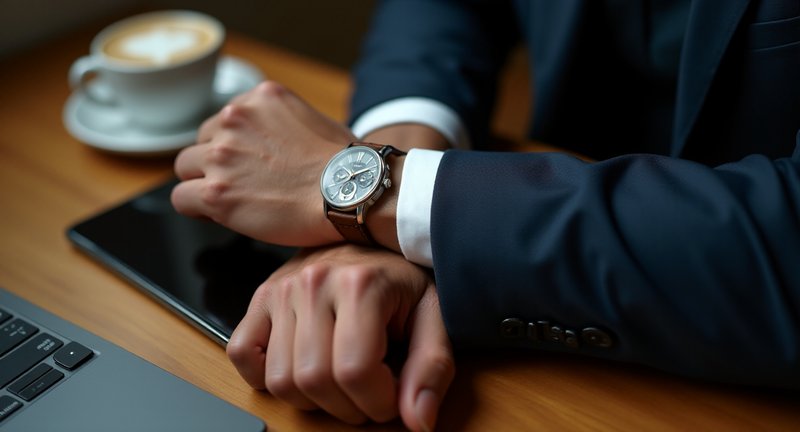
Here’s why this dimension deserves your attention:
-
A Perfect Fit: Just as a tailored suit elevates your look, the right measurement ensures your watch sits snugly. A mismatch can lead to an awkward and unappealing appearance.
-
Style Harmony: This measurement influences your choice of straps, from leather to metal. Different styles can completely transform the vibe of your watch. Picture this: a rugged canvas strap can instantly add a casual flair to a formal piece.
-
Comfort is Key: Ever had a watch that felt heavy or uncomfortable? The right fit allows for an enjoyable wearing experience. A watch should complement your daily activities without causing irritation.
-
Easily Customizable: If you’re like me, you love switching up your watch styles. Knowing this dimension makes it a breeze to explore a plethora of options without the headache of poor fits.
-
Accessorizing with Confidence: Whether you’re aiming for a minimalist or statement look, the proper measurement empowers you to confidently accessorize your outfits. You can mix and match with flair, knowing you have the right fit.
In essence, don’t underestimate the impact of this measurement on your timepiece’s overall personality. It’s not just about telling time; it’s about expressing who you are. So, the next time you’re shopping for a new watch or strap, keep this dimension at the forefront of your mind.
Measuring for Vintage vs. Modern Watches
As for the enchanting world of vintage and modern watches, measuring is not just a routine task; it’s an art form that can lead you down a fascinating path of discovery. In my experience, each timepiece carries its own story, and understanding how to measure them can significantly enhance your appreciation.
Here are a few key considerations to keep in mind:
-
Dial Size: This is your watch’s face the canvas that displays its personality. Vintage watches often boast smaller dials, offering an elegant, understated charm, while modern pieces may present larger faces, making bold statements.
-
Case Thickness: This dimension impacts the watch’s overall comfort and style. Vintage designs often feature slim cases, reflecting the trends of yesteryear. On the other hand, modern styles can lean toward chunkier cases, showcasing a robust aesthetic that some find appealing.
-
Band or Strap Size: The length and style of the band can drastically change the watch’s look and feel. Vintage watches typically come with narrower bands, which give them a classic touch. Meanwhile, modern designs may accommodate wider straps, which can add a contemporary flair.
-
Shape Variations: Don’t forget about the various shapes! Vintage watches often flaunt unique shapes like tonneau or rectangular designs, while modern watches might stick to more conventional round cases. This variety allows for personal expression and style.
In navigating the landscape of timepieces, keep in mind that measuring for fit is about more than just numbers it’s about the stories they tell and the emotions they evoke. So, whether you’re drawn to the nostalgia of vintage or the sleekness of modern, each watch holds the promise of a captivating experience.
Factors to Consider When Choosing a Strap
Choosing the right strap for your timepiece is like picking the perfect accessory for an outfit; it can elevate your entire look. First and foremost, consider the material. Leather, fabric, metal the choices are abundant, each lending a unique personality to your watch.
Then, there’s the length of the strap. I remember the first time I donned a strap that was a tad too loose. It slipped around my wrist like a fish out of water! Comfort is key here, so make sure to find a fit that feels just right.
Don’t overlook the color, either. A vibrant hue can transform a simple watch into a bold statement piece. Trust me, your wardrobe will thank you when you choose a strap that harmonizes or even contrasts beautifully with your outfits.
Another factor worth pondering is the buckle type. There’s something about a butterfly clasp that whispers sophistication, while a traditional pin buckle offers classic charm. The choice really reflects your style, so ponder this thoughtfully.
Also, think about the versatility of the strap. Can it easily transition from day to night? A strap that effortlessly adapts to different occasions becomes a staple in your collection.
As you embark on this journey of selection, remember that each strap has its own story to tell. Choose wisely, and let your watch become a true extension of yourself!
Impact of Lug Width on Comfort and Fit
When diving into the world of timepieces, one often overlooks the subtle yet significant detail of lug width. This often-forgotten measurement has a profound impact on comfort and fit, shaping the way a watch rests on your wrist. From my own journey through the point of horology, I’ve discovered that understanding this aspect can elevate your wristwear experience.
Here’s why lug width matters:
-
Bracelet Compatibility: The width between the lugs determines what kind of straps or bracelets you can use. An improper fit can lead to unsightly gaps or an awkward look. Trust me, you don’t want to be caught in that fashion faux pas.
-
Comfort Level: A snug fit around the wrist is essential. If the lugs are too wide or narrow for your wrist, it can cause discomfort, especially during extended wear. I’ve learned that comfort should never be sacrificed for style.
-
Aesthetic Balance: The proportions of a watch greatly affect its visual appeal. A watch with a lug width that complements its case size creates a harmonious look. It’s like finding the perfect frame for a piece of art everything falls into place.
-
Personal Style Expression: The right lug width can amplify your individual style. Whether you prefer a sleek, minimalist look or a bold, chunky statement, the lugs play a pivotal role in showcasing your personality through your watch choice.
Also, the dimensions of lug width might seem like a minor detail, but they are a linchpin in achieving that elusive blend of comfort and style. Next time you’re selecting a watch, take a moment to consider how this measurement can transform your experience. Trust me; your wrist will thank you.
Popular Lug Width Sizes and Their Applications
When diving into the world of wrist adornments, the dimension of the space where the strap connects to the case often stirs curiosity. Let’s explore the popular widths and their unique roles in shaping both style and functionality.
Typically, widths vary between 18mm to 24mm. A narrower size, like 18mm, feels almost dainty, perfect for vintage pieces or feminine designs. It whispers elegance without overwhelming the wrist, making it ideal for those who cherish subtlety.
On the other end of the spectrum, we have the bold 24mm widths. This hefty size commands attention, drawing the eye immediately to the wrist. I often find myself gravitating toward wider straps for a sporty look, as they offer a robust appeal while adding a contemporary edge.
What’s fascinating is how the width influences not just aesthetics but also comfort. A snug fit with the right width ensures that the piece stays securely in place, dancing with your movements rather than sliding about.
In my experience, experimenting with various widths can completely transform the vibe of the same watch. I’ve paired a classic timepiece with both a sleek leather band and a chunky NATO strap, each width breathing new life into the same design.
So, whether you’re a fan of minimalism or a lover of statement pieces, understanding these widths can be a delightful journey. It’s all about finding that perfect fit that resonates with your style and personality.
Custom Straps: Pros and Cons
When I first clarified the world of custom straps, I was drawn by the allure of personalization. There’s something uniquely satisfying about wearing a piece that feels like an extension of yourself. However, navigating the pros and cons can feel like walking a tightrope.
On the plus side, custom straps can completely transform the aesthetic of your timepiece. You can swap a bland band for something vibrant and eye-catching, reflecting your mood or style. It’s a delightful way to inject personality into a watch that may otherwise blend into the background.
Yet, there’s a flip side to this exhilarating journey. Custom straps can sometimes compromise the integrity of your watch. I’ve experienced the frustration of a poorly fitting strap, which can lead to discomfort or even damage. It’s essential to ensure that the craftsmanship matches your vision.
Additionally, customization can come with a price tag that might make your wallet whimper. While I adore the idea of bespoke designs, the cost can escalate quickly, especially if you’re opting for high-quality materials. It’s worth weighing the aesthetic benefits against your budget.
Also, the decision to go for custom straps boils down to personal preference. If you’re someone who cherishes individuality and doesn’t mind a little maintenance, go for it! Just be prepared to invest time and effort to find the perfect fit for your watch.
Common Questions
What does 22mm watch band mean?
A 22mm watch band refers to the width of the strap that fits onto the watch case. Specifically, it indicates that the distance between the lugs of the watch, where the strap attaches, is 22 millimeters. This measurement is crucial when selecting a replacement band, as using a strap that is too wide or too narrow can affect both the aesthetics and functionality of the watch. Therefore, knowing the lug width ensures a proper fit and maintains the watch’s overall look and comfort on the wrist.
What is the lug width of a vintage watch?
The lug width of a vintage watch can vary significantly depending on the model and brand, but it often ranges between 18mm and 22mm. Many vintage watches feature narrower lugs, typically around 18mm, as they were designed to complement the more delicate aesthetics of that era. However, certain brands or models, especially those designed for sport or adventure, may have wider lugs. To determine the exact lug width of a specific vintage watch, it’s best to measure the distance between the lugs directly or consult manufacturer specifications.
How should a watch fit lug to lug?
The lug-to-lug fit of a watch refers to the distance from the top lug to the bottom lug, impacting how the watch sits on your wrist. Ideally, a watch should sit comfortably without overhanging the wrist, as this ensures both style and comfort. A proper fit means the watch lugs should align well with the edges of your wrist. If the lugs extend past the wrist, the watch may feel bulky or cumbersome. Finding a watch with an appropriate lug-to-lug distance is essential for achieving an optimal and aesthetically pleasing fit.
How do you measure watch strap width?
To measure watch strap width accurately, you need a caliper or a ruler. Place the caliper or ruler across the width of the strap at the point where it meets the lugs. Measure the distance between the inner edges of the lugs, as this determines the strap width required for a proper fit. If using a ruler, be sure to read the measurement in millimeters for precision. This width measurement is critical for selecting a compatible strap to ensure that it fits snugly and securely onto the watch case.
Will a 22mm strap fit a 21mm lug?
A 22mm strap typically will not fit a 21mm lug well, as there would be a slight excess in width, making the strap too wide for the lug opening. While some users might attempt to fit a 22mm strap onto a 21mm lug, this can result in an awkward fit, leading to potential damage to both the strap and the watch. It’s always advisable to match the strap width exactly to the lug width to ensure a secure fit and to maintain the watch’s integrity and style.
What is the most common watch band width?
The most common watch band widths are typically 18mm, 20mm, and 22mm, with 20mm being the most universally accepted width for both men’s and women’s watches. Many modern watches are designed with 20mm lugs due to their versatility, making them compatible with a wide range of straps. However, the choice can vary depending on the specific style of the watch. It’s essential to consider the overall design and purpose of the watch when selecting a band width to ensure it complements the watch’s aesthetic.
What is the most common watch lug?
The most common strap width measurement for modern watches is generally 20mm, which provides a good balance of size and versatility for various styles. However, other common lug widths include 18mm and 22mm, catering to a variety of watch designs, from dress to sports models. It’s essential to know the lug width when selecting a strap or band, as using the correct size ensures a proper fit and helps maintain the watch’s overall aesthetic. Vintage watches may have different lug widths, so always check specifications for accurate fitting.
How to find band lug size?
To find the lug width of a watch, you can either measure it directly or check the manufacturer’s specifications. If measuring, use a caliper or ruler to measure the distance between the inner edges of the lugs where the strap connects. It’s crucial to measure in millimeters for accuracy. Alternatively, many online resources and watch forums provide detailed specifications for various watch models, which can also be helpful. Knowing the lug width is vital when purchasing a new strap to ensure compatibility and proper fit.
How wide is the lug on a Patek 5170?
The lug width of a Patek Philippe 5170 is typically 20mm. This width is designed to balance the classic elegance of the timepiece with modern style. As a luxury watch, the Patek 5170 is known for its exquisite craftsmanship and attention to detail, making it important to choose a strap that complements its design. When selecting a replacement strap, ensure it matches the 20mm lug width for a secure fit and to maintain the watch’s overall aesthetic appeal.
What is the difference between 20mm and 22mm straps?
The primary difference between 20mm and 22mm straps lies in their width, affecting how they fit on a watch case. A 20mm strap is narrower and typically suits watches designed with a more refined or smaller profile, while a 22mm strap provides a bolder look, often associated with larger watches. Additionally, the choice of strap width can impact the overall aesthetic of the watch. Selecting the appropriate width is crucial for achieving a secure fit and maintaining the visual balance of the timepiece on your wrist.
What does mm mean on a watch band?
‘MM’ on a watch band stands for millimeters, which is a metric unit of measurement used to indicate the width of the strap. This measurement is critical for ensuring that the strap fits properly between the lugs of the watch. For example, a watch band labeled as 20mm means it has a width of 20 millimeters. This precision is essential because using a strap that does not match the lug width can lead to an improper fit, affecting both the comfort and appearance of the watch.



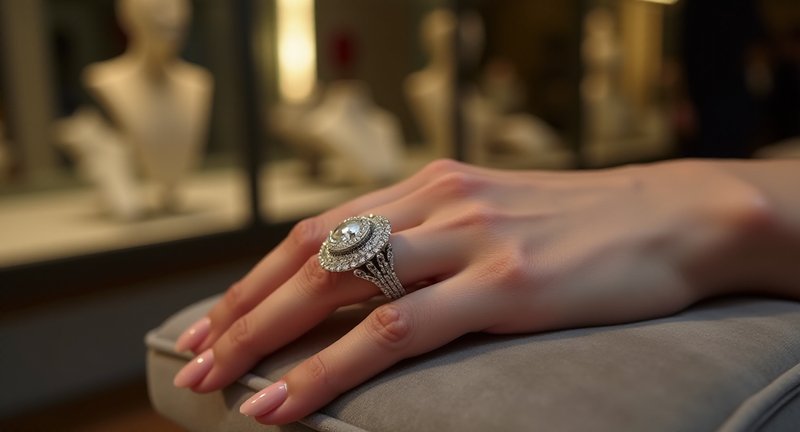
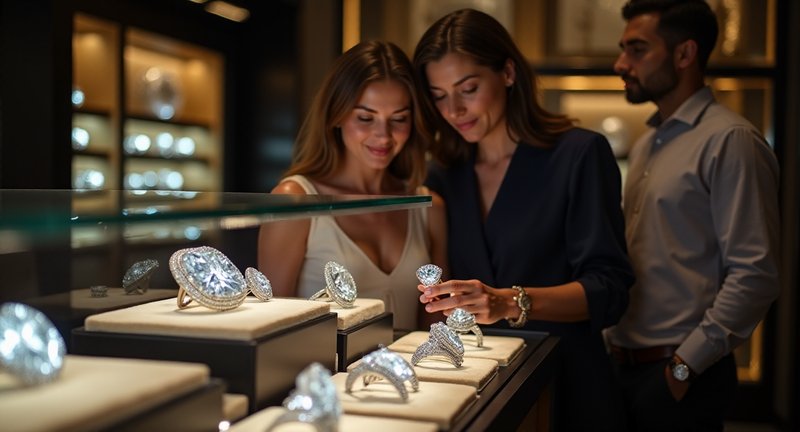



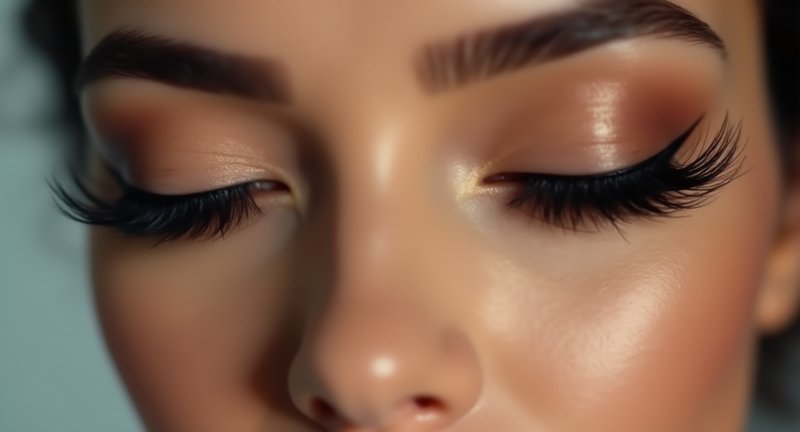

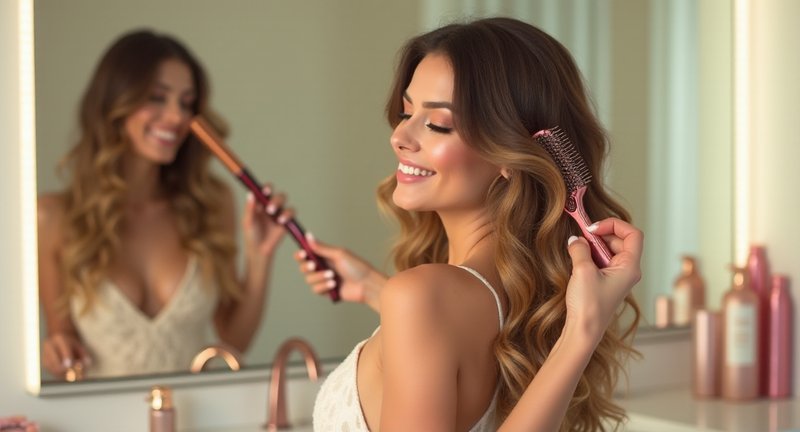
Love your take on measuring vintage versus modern watches! It really highlights how personal style evolves with timepieces.
I couldn’t agree more with your insights about the importance of strap measurements! When I first delved into the world of horology, I underestimated how much a well-fitted strap can elevate not just the watch’s appearance but also its comfort. It’s like when you wear shoes that are just right; you feel a sense of confidence. Plus, switching straps based on the occasion can really enhance the watch’s versatility. I once paired a rugged canvas strap with a formal watch, and it completely transformed the look, adding an unexpected twist that sparked conversations. So, yes, always keep those measurements in mind! They truly can be the difference between just wearing a watch and truly showcasing your personal style.
I love how you compared choosing watch straps to picking shoes! It’s so true. Each strap brings a unique vibe to the table. I recently switched to a nylon strap for summer, and I can’t get over how lightweight and comfortable it feels! They are perfect for those sunny days at the beach. I also have a leather strap that I adore it really does develop a beautiful patina over time. It’s like watching a piece of art evolve! I totally agree with your point about mixing and matching; it’s like giving my watch a fresh wardrobe. Who knew a simple strap change could have such a big impact? Thanks for the great tips!
Your breakdown of lug designs is spot on! I used to think all lugs were the same until I got my first watch with curved lugs. It felt like a whole new world of comfort and style! I love how they hug the wrist and make the watch feel like it was custom-made just for me. I’ve had my fair share of misfit straps too; it’s amazing how the right lug style can completely transform the aesthetic of a watch. I think those hooded lugs are particularly striking! They give such an artistic flair that really sets a watch apart. Your advice on checking lug width before buying a new strap is invaluable. Nothing ruins the excitement of a new accessory like realizing it just doesn’t fit! Thanks for sharing this wealth of knowledge; it’s refreshing to read about the passion and attention to detail that goes into choosing the perfect watch.
I completely resonate with your insights on lug measurements! It’s so easy to overlook those tiny details until it’s too late. I remember ordering a strap that was just a tad too wide, thinking it wouldn’t matter much. Boy, was I wrong! It felt like wearing a belt three sizes too big completely off balance. Using a caliper is definitely the way to go. It’s like having a secret weapon in my watch toolbox now. Your tip about double-checking measurements is golden; I’ve saved myself from many awkward moments by taking that extra step. I’ve learned my lesson well. Plus, measuring from the inner edges? I’ve made that rookie mistake before! It’s a game-changer to get it right from the start. Thanks for sharing these practical tips; they really do elevate the watch experience and help us all avoid those strap snafus. Can’t wait to dive into more of your posts and learn more about the nuances of watch styling! Keep it coming!
I absolutely love your approach to garment measuring! It’s true that without accurate measurements, all your hard work can go to waste. I remember trying to tailor a shirt once and ended up with a hilariously lopsided hem because I didn’t use a measuring tape properly! Your list of essential tools is fantastic; I can’t emphasize enough how crucial a flexible measuring tape is. It really does make the process so much smoother. Tailor’s chalk is a game changer, too I’ve saved so much time with it. I never knew what a seam gauge was until a friend introduced me to it, and it completely changed the way I do alterations. Your enthusiasm for precision is contagious! It’s all about those little details that ensure everything fits just right. Keep sharing these great tips; I’m learning so much!
Wow, I never thought I’d find myself so invested in lug measurements, but your breakdown made it sound both fun and crucial! It’s so true that the distance between the lugs can dramatically impact how a watch looks and feels. I remember measuring my watch lug width using a flimsy plastic ruler and ending up with a strap that wobbled. Talk about a rookie mistake! Your tips about using a metal ruler and double-checking the measurement are spot-on. It’s almost like a watch strap matchmaking service getting that perfect fit is essential. I also love how you emphasize the aesthetic and balance; it truly transforms the entire wristwatch experience. I can’t wait to put these measurements into practice for my next strap upgrade. It’s such a small detail that can make a huge difference. Cheers to precision and style in watchmaking!
I couldn’t agree more about the importance of straps! They truly are the unsung heroes of watch aesthetics. I once made the mistake of pairing a classic dress watch with a rubber strap for a formal event, and let’s just say, I felt completely out of place. It’s fascinating how the right strap can enhance the overall look, like finding the perfect shoes to complete an outfit. I love how you mentioned the material choice! Leather gives such a timeless vibe, while metal can indeed make you feel like a superhero. As for the clasp, I’ve had my share of beautiful straps that ended up being uncomfortable due to cheap clasps. Investing in quality makes all the difference! Comfort is key; I always look for straps that not only look great but feel great too. Thanks for highlighting these essential aspects! It’s all about finding that harmony between style and practicality.
Your exploration of watch components is spot on! I’ve always viewed the case as the heart of the watch, protecting the intricate movement inside. It’s interesting how materials can alter not just the look but the feel on the wrist. For example, switching from a heavy stainless steel case to a lightweight titanium one made a world of difference for me, especially on long wear days. Also, the crown oh man, I can’t tell you how many times I’ve fumbled with those tiny knobs! It’s like a secret handshake with the watch, and knowing it can unlock additional features is empowering. The crystal choice is another great mention; I’ve scratched more acrylic than I’d like to admit! Overall, your breakdown makes me appreciate my collection even more, especially the often-overlooked strap pins that hold everything together. Here’s to celebrating every tiny detail in horology!
I love how you’ve highlighted the subtlety of watch and strap connections! It really is like finding that perfect pair of shoes, isn’t it? I recently tried out a wider NATO strap on my diver watch, and it was a game-changer! It grounded the piece beautifully and gave it that bold, adventurous vibe. Meanwhile, I keep a couple of narrower straps for dressier occasions, which add a touch of elegance. It’s fascinating how just a small tweak can drastically change the aesthetic. Your insights really inspire me to explore even more strap options!
I couldn’t agree more about the importance of lug width! It’s such a small detail but can completely change the way a watch looks and feels. I remember when I first started collecting, I was all about the dial and overlooked the straps. Once I started experimenting with different widths, it felt like I unlocked a whole new world of style. I even found some vintage straps that made my robust watches feel chic and elegant! Your point about achieving that perfect balance is spot on!